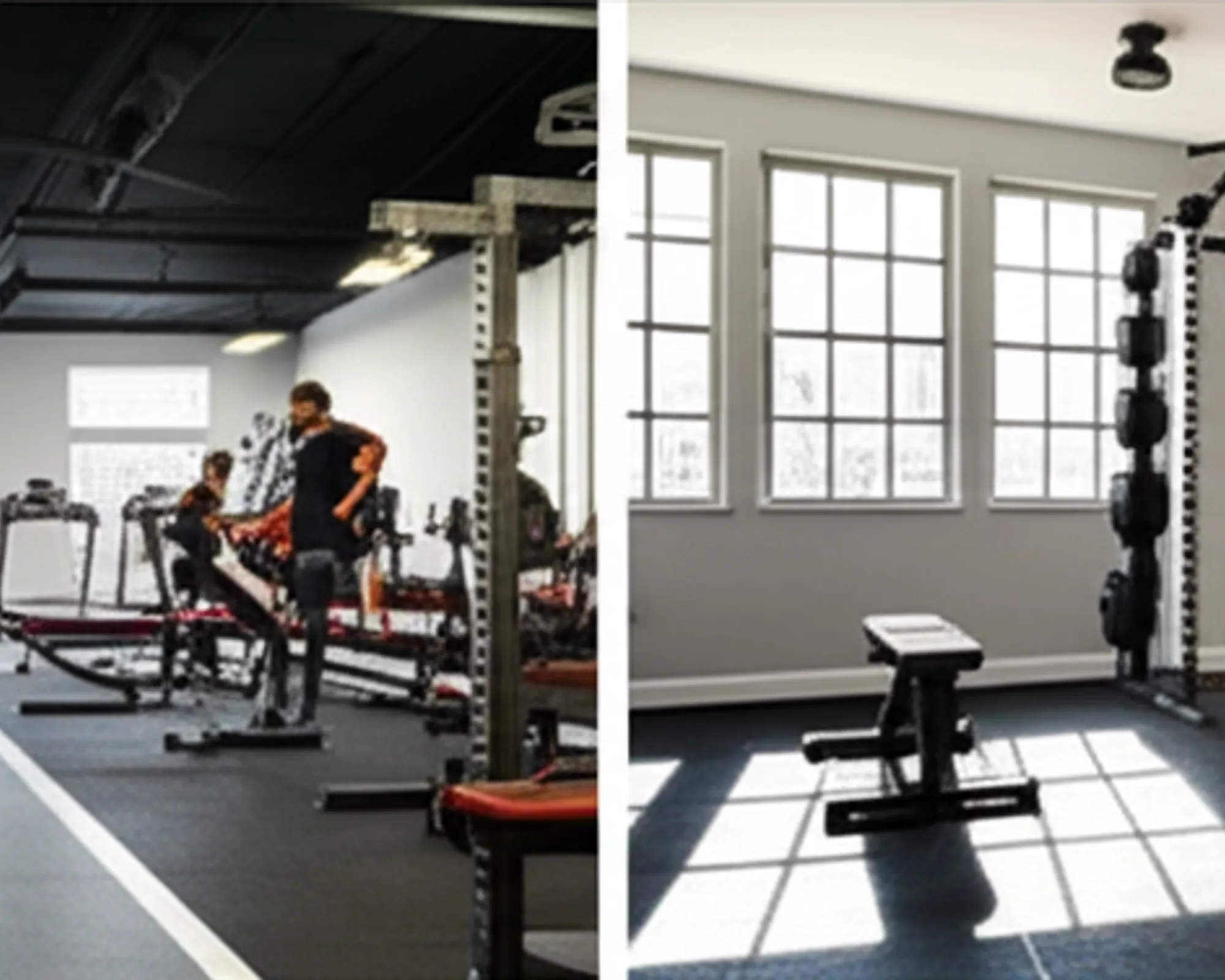How to Build a Home Gym vs Going to a Commercial Gym

The Appeal of the Commercial Gym
Commercial gyms have long been the go-to for fitness enthusiasts, and for good reason. They typically boast an impressive array of equipment, from dozens of cardio machines like treadmills, ellipticals, and stationary bikes, to a vast selection of weightlifting apparatuses including free weights, resistance machines, and specialized functional training gear. This variety ensures you’re never limited in your workout routine and can constantly challenge your body in new ways. Beyond the machines, commercial gyms often provide a robust ecosystem of fitness resources.
Group fitness classes, such as Zumba, spin, yoga, and HIIT, offer structured workouts, expert instruction, and a powerful sense of community and motivation. Personal trainers are readily available to provide tailored guidance, develop customized programs, and help you refine your form, preventing injuries and maximizing results. The social aspect is another significant draw; being surrounded by other motivated individuals can be incredibly inspiring, fostering a competitive yet supportive environment. Moreover, commercial gyms handle all the maintenance, cleaning, and repair of equipment, relieving you of any logistical burdens. They often offer additional amenities like locker rooms, showers, saunas, steam rooms, and even childcare services, adding convenience to your fitness routine.
Understanding Commercial Gym Drawbacks
Despite their many benefits, commercial gyms come with their own set of drawbacks. One of the most common complaints is the recurring cost. Membership fees, which can range from affordable to premium, add up over time, and these costs are ongoing whether you utilize the gym regularly or not. Additional expenses for personal training, classes, or even parking can further inflate the total cost. Perhaps the most frustrating aspect for many is the crowds, especially during peak hours. Waiting for popular equipment, navigating busy weight rooms, or finding an open cardio machine can disrupt your flow and extend your workout time.
Travel time to and from the gym is another factor that can erode consistency. What might seem like a short drive can quickly become a significant time commitment when factoring in traffic, parking, and getting ready. Hygiene can also be a concern in shared spaces, with equipment being used by numerous individuals throughout the day. While gyms strive to maintain cleanliness, the sheer volume of users can make it challenging to keep every surface pristine. Finally, the lack of privacy can be a deterrent for some. Working out in front of strangers, especially when trying new exercises or feeling self-conscious, can be intimidating and detract from the overall experience.
The Freedom of a Home Gym
Building a home gym offers unparalleled convenience and flexibility, two significant factors that often influence adherence to a fitness regimen. Imagine rolling out of bed and heading straight to your workout space without the need to pack a bag, commute, or worry about what to wear. Your gym is always open, 24/7, ready whenever inspiration strikes. This eliminates excuses related to time, weather, or travel, making it easier to stay consistent with your routine. Privacy is another major advantage; you can work out in complete solitude, wear whatever you like, play your own music as loud as you want, and focus entirely on your performance without feeling judged or observed.
While the initial investment for a home gym can seem substantial, it often proves to be more cost-effective in the long run compared to years of recurring membership fees. You pay once for equipment that lasts for years, and there are no monthly bills. You also have complete control over your environment, from temperature and lighting to cleanliness. Only you (and your household) use the equipment, significantly reducing hygiene concerns. Furthermore, a home gym allows for ultimate customization. You only purchase the equipment that aligns with your specific fitness goals and preferences, avoiding paying for machines you'll never use. No waiting for equipment means more efficient workouts, maximizing your precious time.
Navigating Home Gym Challenges
Despite its many benefits, establishing a home gym comes with its own set of hurdles. The most significant is the upfront cost. While it can be a long-term saving, the initial investment for quality equipment—such as a squat rack, barbell, weights, dumbbells, and a bench—can be considerable. Space is another critical consideration. Not everyone has a spare room, garage, or dedicated corner to set up a functional gym. Equipment can be bulky, and ensuring adequate clearance for movements is essential for safety and effectiveness. Limited equipment is also a common challenge; unless you have an unlimited budget and ample space, your home gym will likely not rival the variety found in a commercial setting. This might mean getting creative with exercises or finding alternative movements to target certain muscle groups.
Motivation can also be a harder beast to tame in a home environment. Without the social energy of a commercial gym or the presence of a trainer, it can be easy to lose focus, skip workouts, or become complacent. The absence of a built-in community means you'll need to cultivate your own accountability. Furthermore, you become solely responsible for equipment maintenance, cleaning, and eventual repairs. There's no staff to spot you or offer immediate advice on form, potentially increasing the risk of injury if you're not diligent about learning proper technique. For many, a home gym requires a strong sense of self-discipline and self-reliance.
Factors to Consider When Making Your Choice
The decision between a home gym and a commercial gym ultimately boils down to individual circumstances and priorities. Start by assessing your budget. How much can you realistically afford upfront for equipment, versus a monthly recurring fee? Consider your available space. Do you have a dedicated area that can accommodate the necessary equipment, or would a commercial gym be a more practical solution? Your fitness goals play a crucial role. If you're into specialized training like powerlifting or Olympic lifting, a commercial gym might offer the heavy-duty equipment you need, or you might need to invest significantly in a robust home setup. For general fitness, cardio, or bodyweight training, a home gym can be highly effective with minimal equipment.
Think about your motivation style. Do you thrive on external motivation, group energy, and structured classes, or are you self-disciplined enough to push yourself consistently in solitude? Consider your time commitment and schedule. If your life is hectic, the convenience of a home gym might be invaluable. If you enjoy the social aspect and variety, a commercial gym could be a better fit. Ultimately, there's no single "right" answer. Both options can lead to incredible fitness transformations. The key is to honestly evaluate your needs, preferences, and resources to choose the environment that will best support your long-term health and wellness journey.
Conclusion
Whether you opt for the bustling environment of a commercial gym or the personalized sanctuary of a home gym, the most important thing is to choose an option that keeps you consistent and engaged in your fitness journey. Commercial gyms offer variety, community, and expert support, but come with recurring costs, potential crowds, and travel. Home gyms provide ultimate convenience, privacy, and long-term cost savings, but require an initial investment, dedicated space, and a high degree of self-motivation. By carefully weighing these factors against your personal circumstances, you can confidently select the path that will empower you to achieve and maintain your fitness goals for years to come. Your ideal gym is the one you will actually use.


